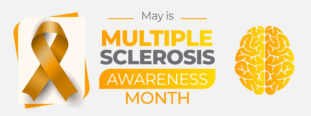How common is JC virus exposure?
A number of recent studies have investigated the proportion of people with MS who have been exposed to the JC virus. JC virus exposure is one of the risk factors for developing PML (progressive multifocal leukoencephalopathy) during treatment with Tysabri.
Exposure is determined with the STRATIFY test, which detects antibodies to the JC virus. If the test is negative, the risk of developing PML during Tysabri treatment is very low (less than 1 in a 1000). But the PML risk is 10-fold higher (about 1 in a 100) for people who test positive for the virus, have been treated at some point with immunosuppressants, and have been taking Tysabri for two years or more.
The Canadian study examined blood samples from over four thousand people (Bhan and colleagues. Can J Neurol Sci 2014;Nov 4:1-5). Overall, 56.3% of people showed prior JC virus exposure. The rate of viral exposure increased with age, from 45% in younger people to 61% in those aged 60 or older.
These results are consistent with other population studies. In the JEMS (JC virus epidemiology in MS) study published earlier this year, the overall prevalence of JC virus exposure was 57.1% (Bozic and colleagues. Eur J Neurol 2014;21:299-304). JEMS included people from Europe, Canada and Australia.
Another international study found that JC virus exposure was highest in Turkey (67.7%), Austria (66.7%), Germany (59.1%) and Sweden (50.0%), and lowest in Norway (47.4%) and Denmark (52.6%) (Olsson and colleagues. Mult Scler 2013;19:1533-1538).
A JC virus antibody test is often recommended prior to starting Tysabri so that people have a more complete picture about the potential risks. People who test negative should be re-tested periodically to see if their antibody status has changed. The rate of seroconversion (i.e. from negative to positive for viral antibodies) is estimated to be about 3-8% per year.
Share this article
Facebook Twitter pin it! Email
Related Posts
Back





